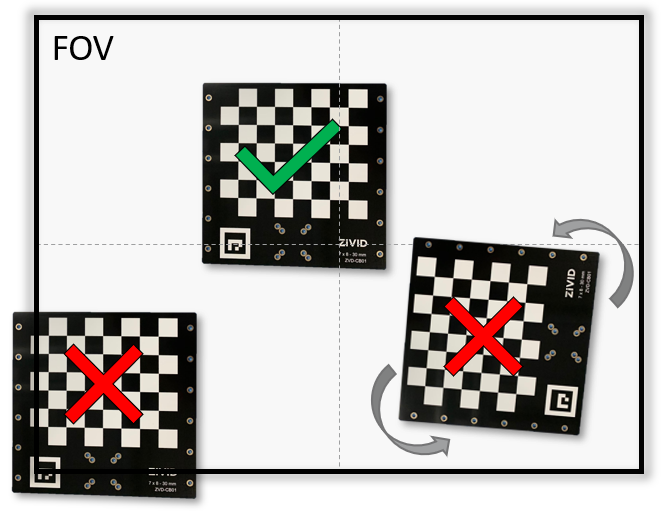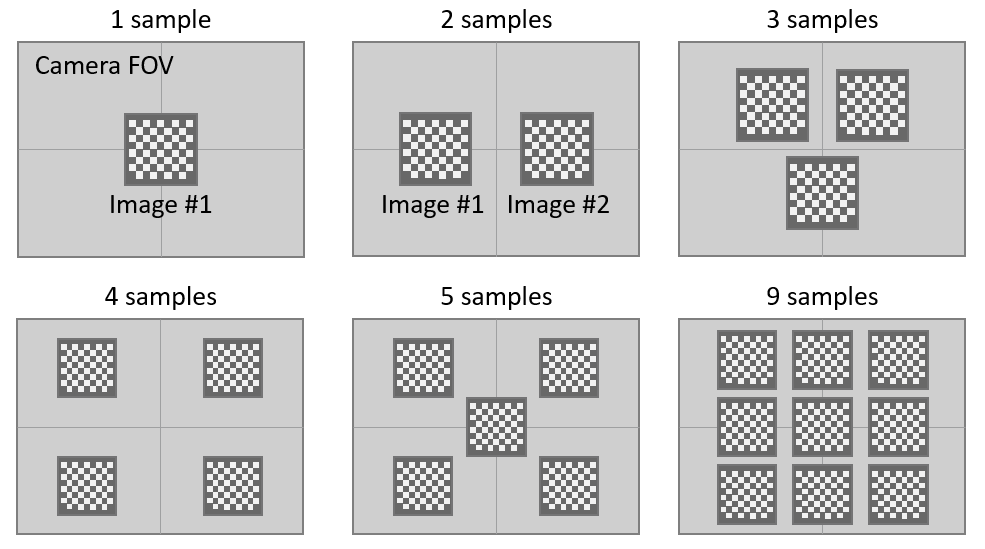Guidelines for Performing Infield Correction¶
Quick Tips and Advice¶
For correction over multiple distances, cover at least 500 mm in Z-depth to get the best results.
If the board is positioned farther than 3000 mm, it may fail detection or result in inaccurate measurements.
Take three or more images to provide multiple data points for the best correction.
Take measurements at multiple distances to get a better correction.
Try to align the board as much as possible in the X, Y, and Z axis, so the checkerboard surface appears as a flat plane to the camera. The rotation tolerance for the infield correction tool is 15 degrees.
Be mindful of ambient lighting conditions if used at long distances.
Mount the board on a robot for optimal stability and repeatability.
The infield correction should be performed once the camera is mounted where it will be used in production. For example, if the camera is imaging a pallet from above, then the infield correction should be performed on-site with the camera facing downward.
Orienting the Correction Board¶
When using the infield correction tool, it is important to find the best position for the Zivid calibration target. For the tool to work, the target must be oriented with the checkerboard facing towards the camera. The target must have the fiducial marker in the lower left-hand corner of the board.

The entire board must be in the field of view of the camera, including the fiducial marker.
The board should be aligned perpendicular (flat) to the camera depth axis.
The board should be oriented so the board’s Fiducial marker and text-align horizontally/with the camera’s baseline.
Note
Future iterations will allow for different orientations of the calibration board.
Covering Distances for Correction¶
When applying infield correction, it is important to cover the entire working distance within which objects will be imaged. If possible, it is even better to cover more distance above and below this threshold, as shown in the image below.

Camera Model |
Minimum Distance |
Maximum Distance |
|---|---|---|
Zivid One+ Small |
600 mm |
1200 mm |
Zivid One+ Medium |
600 mm |
1600 mm |
Zivid One+ Large |
1200 mm |
3000 mm |
Zivid Two |
600 mm |
1500 mm |
Note
The 600 mm distance is the closest that the Zivid calibration board is within Zivid One+ camera’s full view.
Correcting for larger FOV¶
If objects are being picked at the edges of the frame, it is important to cover the center and the edges with the infield correction. Multiple captures at the same distance can provide a better correction metric.

If the application has a short working range (e.g., 1000 mm to 1200 mm in Z), then use the method with multiple captures at each of the distances. This can provide a better correction for this range.